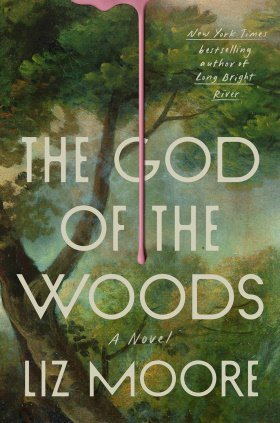In the daylight, headed in the direction of Camp Emerson, she breaks into a jog.
• • •
Fifteen minutes later, Judy stands next to Denny Hayes and Captain LaRochelle on the dirt driveway. Across from them, a squadron of six state troopers—guns drawn, backs to walls—enters the structure two by two.
“This feels unnecessary,” whispers Judy, and Denny turns and shushes her.
“Captain’s orders,” he says.
When the last of the troopers has disappeared out of sight, Judy feels the weight of what she’s done.
For three long minutes, she looks up at the sky. Down at the ground.
How many footsteps did she actually hear? Just a few, she thinks. And were they loud? Not particularly. Could they have been something else? A tree, tapping on the roof. Acorns falling. Dozens of possibilities occur to her, until at last the troopers file out of the slaughterhouse, relaxed now.
The two at the front cross the dirt road to talk to Captain LaRochelle.
“Found the culprit,” says one.
“Family of squirrels,” says the other, grinning.
LaRochelle clears his throat. “That’s it, huh? You sure?”
“Yeah. We searched the whole upstairs.”
LaRochelle says nothing. Then, not looking at Judy, he turns to Hayes.
“I was interrupted during a conversation with Mr. Van Laar,” says LaRochelle. “So I think it best that I return to him now.”
He strides off.
Judyta
1950s | 1961 | Winter 1973 | June 1975 | July 1975 | August 1975: Day Two
Back at the Command Post in the Director’s Cabin, Denny Hayes positions himself at the front of the room, preparing to pick up where he left off with the small group of investigators gathered before him.
The superintendent, he says, is not happy with their efforts so far. The Adirondack Search and Rescue Team—a crew of civilian volunteers—is being dispatched to do a Type Three search today in the surrounding woods, after EnCon’s failure to locate anyone, or anything, yesterday.
“Any leads from this morning?” Hayes asks.
The other investigators glance around. The looks on their faces are clear: not much.
One says: “Couple kids have said they’ve seen a woman in the woods in the past. This summer and other summers, too. Apparently she’s a local legend. Ghost-story type of thing.”
Hayes blinks.
“Ghost story about a woman. Noted,” says Hayes. “Anyone able to tell us more about what this ghost looks like?”
The same investigator says, “Older woman. Thin. Gray hair. That’s all I got. Aside from what they call her.”
“Which is?”
The investigator, chagrined, makes a display of inspecting his notes. Reads it off: “Scary Mary.”
“Scary Mary,” says Hayes.
The investigator nods.
“Anyone else?” says Hayes.
Silence.
“Everyone says Barbara was well-liked,” says another investigator. “No quarrels with anyone, that I’ve heard about.”
Hayes looks more despairing than ever.
Still feeling humiliated from her earlier mistake at the slaughterhouse, Judy weighs whether to produce in this moment the information provided by Mrs. Clute, the cook. Already, she imagines, she’s being talked about on the grounds. Being called incompetent. She’d prefer to tell Denny Hayes in private. But Hayes looks poised to break up the meeting, and so she raises her hand.
“Put your hand down, Judy,” says Hayes. “You’re an investigator, not a student. Go ahead.”
She flushes.
“There’s a cook up at the house who had something to tell me,” she begins. “Turns out she’s the daughter of the man said to have abducted Bear Van Laar.”
For a beat, no one says anything.
Then an investigator who hasn’t spoken yet says: “Carl Stoddard?”

























